L'impression 3D pour lutter contre le COVID-19
Compte tenu de la situation d'urgence actuelle due à la propagation du COVID-19 coronavirus, de belles initiatives et solutions émergent de la solidarité et de l'innovation, notamment pour pallier la pénurie de matériel médical et d'équipements de protection individuelle (EPI).
De l'impression 3D secteur, il existe de nombreux ingénieurs et fabricants de matériaux qui, en collaboration avec des médecins spécialistes, travaillent à la conception de modèles d'EPI (équipements de protection individuelle) qui aident à préserver la santé des toilettes et facilitent leur travail, ainsi que dans le développement de différents prototypes tels que valves, connecteurs de respirateurs ou respirateurs assistés et autres dispositifs qui contribuent à atténuer la pénurie de matériel médical.
De plus, de nombreuses communautés de makers ont lancé leurs imprimantes 3D pour fabriquer ces appareils. En Espagne, l'initiative Coronavirus Makers a vu le jour, une plateforme à but non lucratif avec des milliers de bénévoles. Des initiatives similaires peuvent être trouvées dans des pays comme l'Allemagne, l'Italie, le Chili, l'Argentine ou la Colombie.
Ci-dessous, nous compilons divers modèles d'équipements de protection et de fournitures médicales qui ont été mis gratuitement à la disposition du public par différentes entreprises et associations, et peuvent être téléchargés au format STL et imprimés sur pratiquement n'importe quelle imprimante FDM.
Il convient de garder à l'esprit que certains modèles ne sont pas homologués ou approuvés par les autorités sanitaires correspondantes et que, selon chaque zone ou pays, les exigences de fabrication pour obtenir cette homologation peuvent varier.
Masques faciaux
Tant dans les plateformes de ressources d'impression 3D que dans diverses pages d'entreprises du secteur 3D, différents modèles de masques sont partagés pour l'impression 3D sur tout type d'imprimante 3D FDM.
Il convient de souligner que ces masques , sauf qu'ils disposent des filtres nécessaires, ne servent que de barrière physique contre le virus , en plus d'aider à ne pas le propager en cas d'infection.
Il y a quelques jours, nous avons partagé le design du masque Nanohack développé par le Copper3D team et qui a récemment partagé la mise à jour du design dudit masque :NanoHack 2.0, avec une structure monobloc, solide et hermétique , qui doit être fabriqué avec des filaments antibactériens PLActive et MDFlex pour offrir une protection maximale contre l'environnement extérieur.
PLActive est un polymère recyclable et biocompatible qui contient un nanocomposite de cuivre qui a montré des propriétés antimicrobiennes.
Grâce à sa conception, NanoHack 2.0 est un appareil qui offre une protection contre les particules dans l'air et empêche la propagation des liquides qui contaminent les voies respiratoires. NanoHack utilise le même matériau utilisé dans les masques chirurgicaux (polypropylène non tissé) comme système de filtration. Pour une protection optimale, il est recommandé d'utiliser un filtre en polypropylène non tissé triple couche. Ce filtre est intégré au masque. Ainsi, selon diverses études, une efficacité de filtration de 96,4 % est atteinte pour les micro-organismes de 1 micron et de 89,5 % pour les micro-organismes de 0,02 micron.
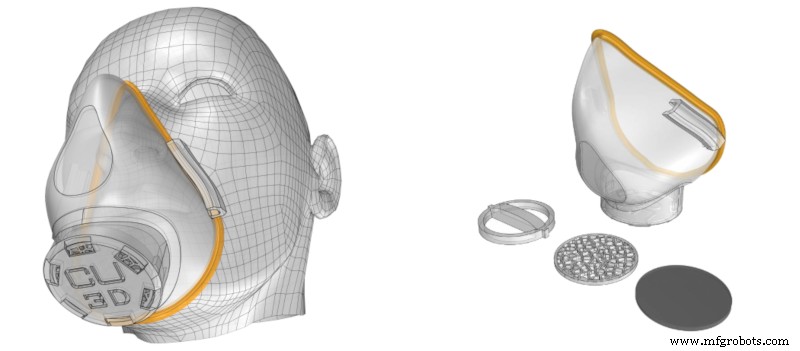
Plus d'infos
Télécharger STL
Écrans faciaux
Vous pouvez trouver d'innombrables modèles de visières et écrans faciaux sur Internet. Pruse a développé plusieurs prototypes, qui ont été vérifiés auprès du ministère tchèque de la Santé. Enfin, ils ont présenté deux versions d'écran :RC1 et RC2.
 This screen design consists of a rigid structure with a flexible and transparent acetate plastic sheet. The rigid structure is 3D printed and the plastic acetate sheet is then adapted as a screen. The RC1 version allows more parts to be printed in the same printing process, while the RC2 version provides slightly higher protection and is more comfortable to wear.
This screen design consists of a rigid structure with a flexible and transparent acetate plastic sheet. The rigid structure is 3D printed and the plastic acetate sheet is then adapted as a screen. The RC1 version allows more parts to be printed in the same printing process, while the RC2 version provides slightly higher protection and is more comfortable to wear.
As a screen, the prototype uses a 0.5mm thick PETG sheet, although other transparent and flexible materials with a similar thickness can be used such as clear acetate sheets.
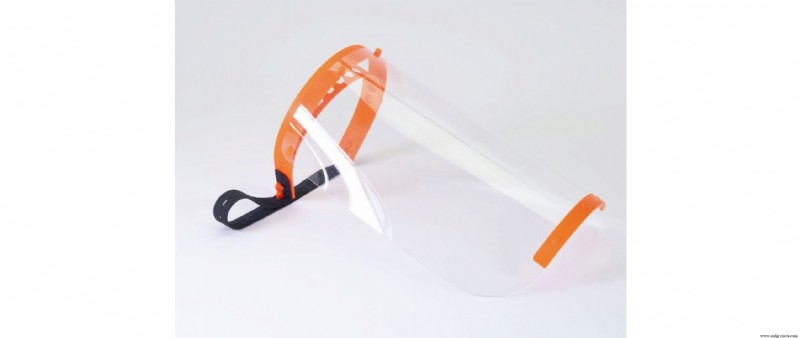
More info
Download STL from Prusa
3D printing with PETG with 30 % fill is recommended, although other materials such as PLA or ABS can be used. In order to deliver them to health centers, it's essential to sterilize them by applying a water bath with bleach (Ratio 50:1) and then rinse them with water. In this way, they will not carry the risk of possible indirect transmissions for healthcare personnel.
Respirators and valves
Given the shortage of self-contained respirators, several groups of engineers, in collaboration with different institutions and healthcare personnel, are developing prototypes and manufacturing the different parts that compose them using 3D printing.
This is the case of the Barcelona Free Trade Zone Consortium that, together with HP, Leitat, and SEAT, have developed a prototype of a respirator using 3D printing to manufacture its parts and taking advantage of elements such as a car's windshield wiper motor. This device has been named OxyGEN and has already been validated by experts from the Parc Taulí hospital in Sabadell. One of the advantages of this device is that its production is scalable.
Another possible solution that arises is to use adapters that allow the same respirator to be used for several patients, such as the “H” connector that Copper3D has developed. A design that minimizes dead space volume and prevents possible air leakage due to unnecessary connections. Copper 3D recommends 3D printing of this device using PLActive, for its antibacterial properties and biocompatibility.
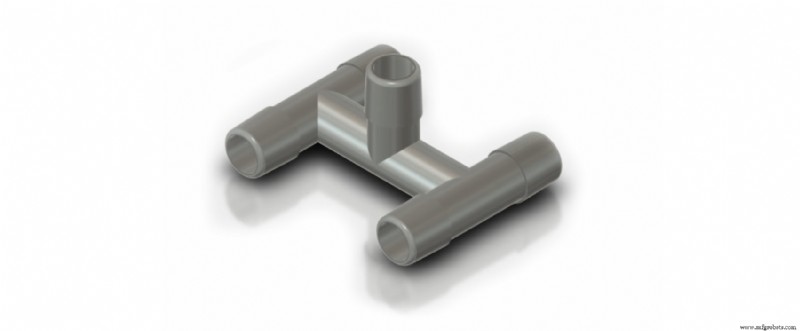
Más información
Download STL
In several hospitals there is a lack of some important elements related to respirators and necessary when treating a patient with respiratory complications. This is the case of the Venturi valve , used to regulate the oxygen concentration that is introduced to the patient through the respirator.
There are several designs available to users, such as this one from the Cults platform.
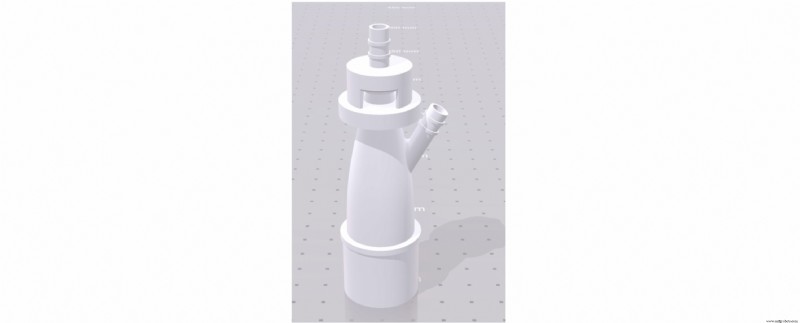
Download STL from Cults
Other devices
In addition to PPE and specific devices for the treatment of patients affected by COVID-19, different tools are being developed to avoid the contagion by indirect contact to which anyone is exposed in their daily activity (door and window handles, buttons for elevators, etc.).
The StopCovid-19 ring is an easy to print ring, designed to press switches and buttons without physically touching them.
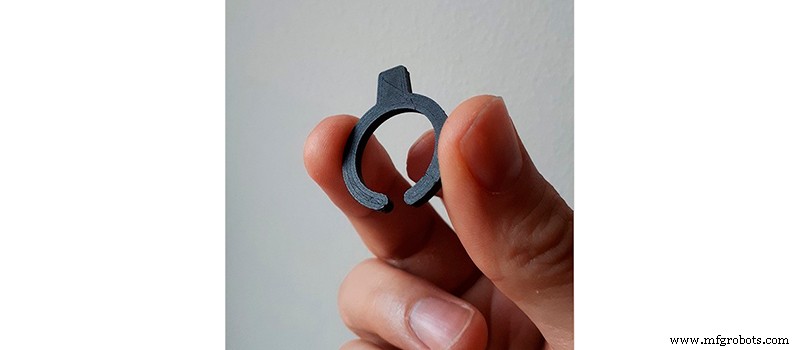
Download STL from Cults
Companies like Materialise have developed a device for attaching to door handles, so that they can be opened without using your hands. Different versions of this tool, adapted to different handle formats (cylindrical, rectangular, circular, etc.) can be downloaded free of charge from its website.

Download STL from Materialise
Combining the usefulness of the previous two, there is LU-Touch :A tool for opening and closing doors and windows, and at the same time a push-button for buttons and switches. LU-Touch can be downloaded for free and printed on any 3D FDM printer. In addition, if you do not have a 3D printer, it can be purchased already printed.
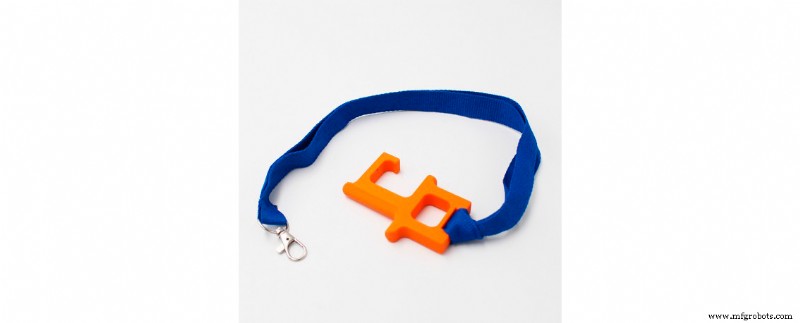
Download STL from Thingiverse
Thanks to the use of these tools, it's possible to minimize the possibility of contagion due to indirect contacts in daily activity. For greater safety, it's necessary to disinfect the tools always after use. It should also be remembered that the use of this type of tool does not exempt from applying the recommended safety rules:wash your hands regularly, do not touch your face, etc.
Specific materials
Among the specific materials to manufacture personal protective equipment, we highlight PLActive and MDFlex for their antimicrobial and antiviral qualities. This material is also recommended for printing expansion devices and valves adapted to self-contained respirators.
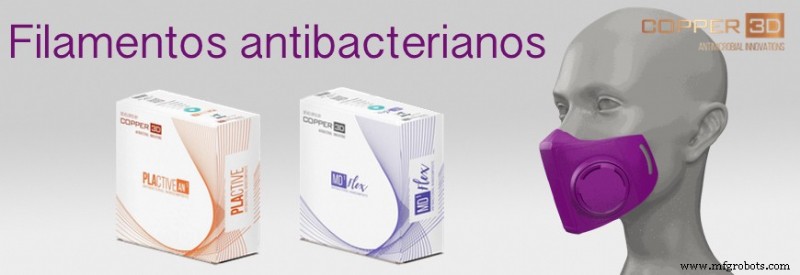
Common materials
For the manufacture of screens or valves that, due to their use, do not need to be composed of biocompatible or antibacterial materials, basic materials can be used in 3D FDM printing, such as PLA or PETG; since these elements do not require specific properties, although it's true that they require some rigidity and it's not recommended to use flexible materials such as Flexfill or FilaFlex.
With these free download files, any user with a FDM 3D printer and any of the aforementioned materials can contribute their bit to help stop the pandemic and the alarming situation we are currently experiencing.
impression en 3D
- Les 3 étapes de base de l'impression 3D
- 6 façons de réduire le coût de l'impression 3D
- 4 choses que la crise COVID-19 nous dit sur l'impression 3D
- Le rôle de l'imbrication dans l'impression 3D polymère
- Rapide et fiable :MedTech Solutions au milieu de la pandémie de COVID-19
- Impression du fusible 1 avec le fusible 1
- COVID-19 a mis l'impression 3D sous les projecteurs
- L'avenir de l'impression 3D dans la fabrication
- L'impression 3D est-elle l'avenir de la fabrication ?



